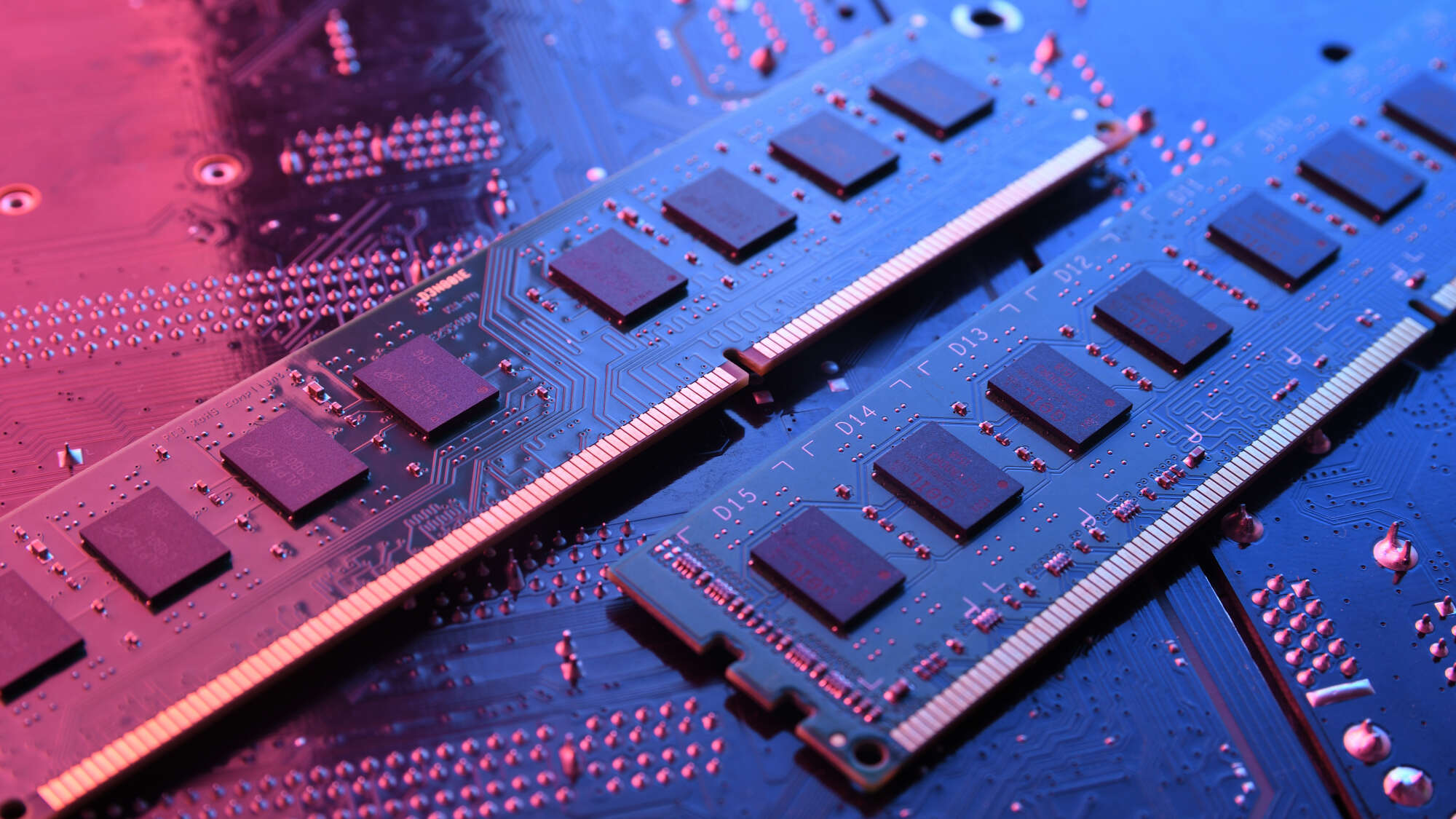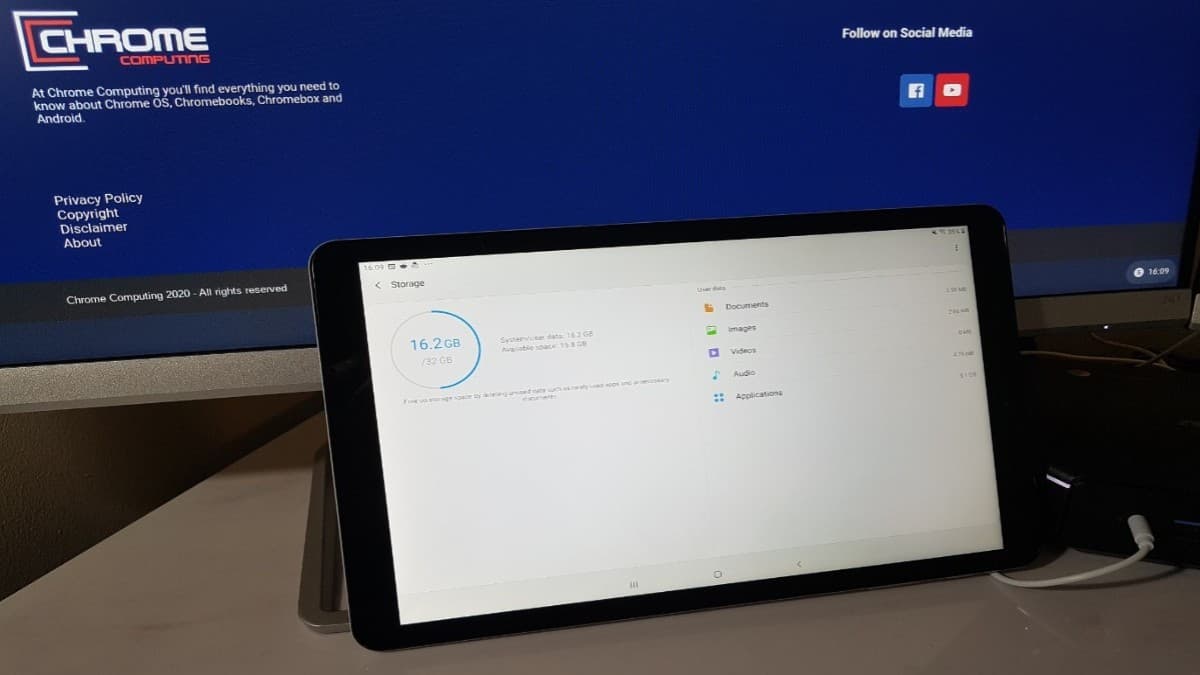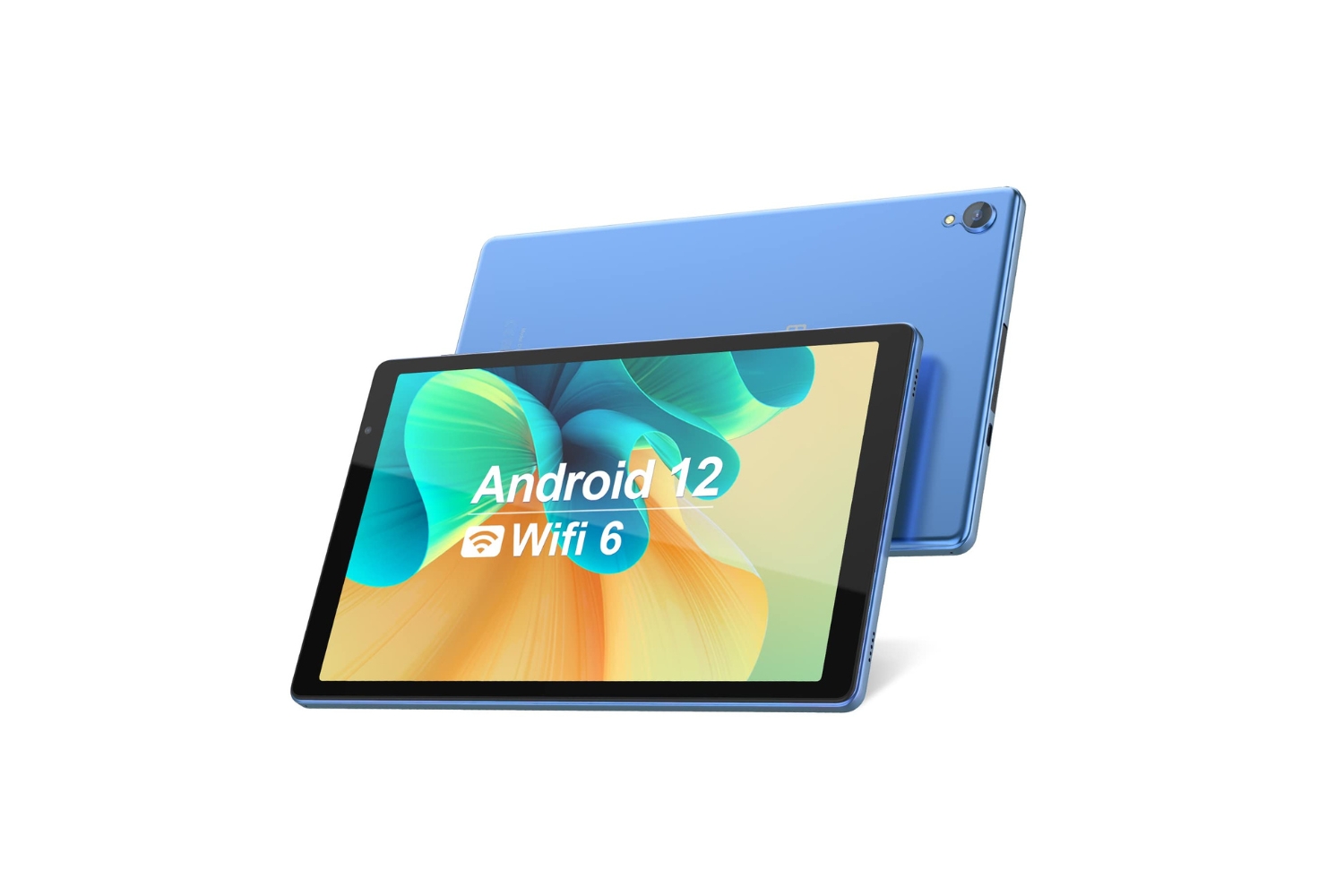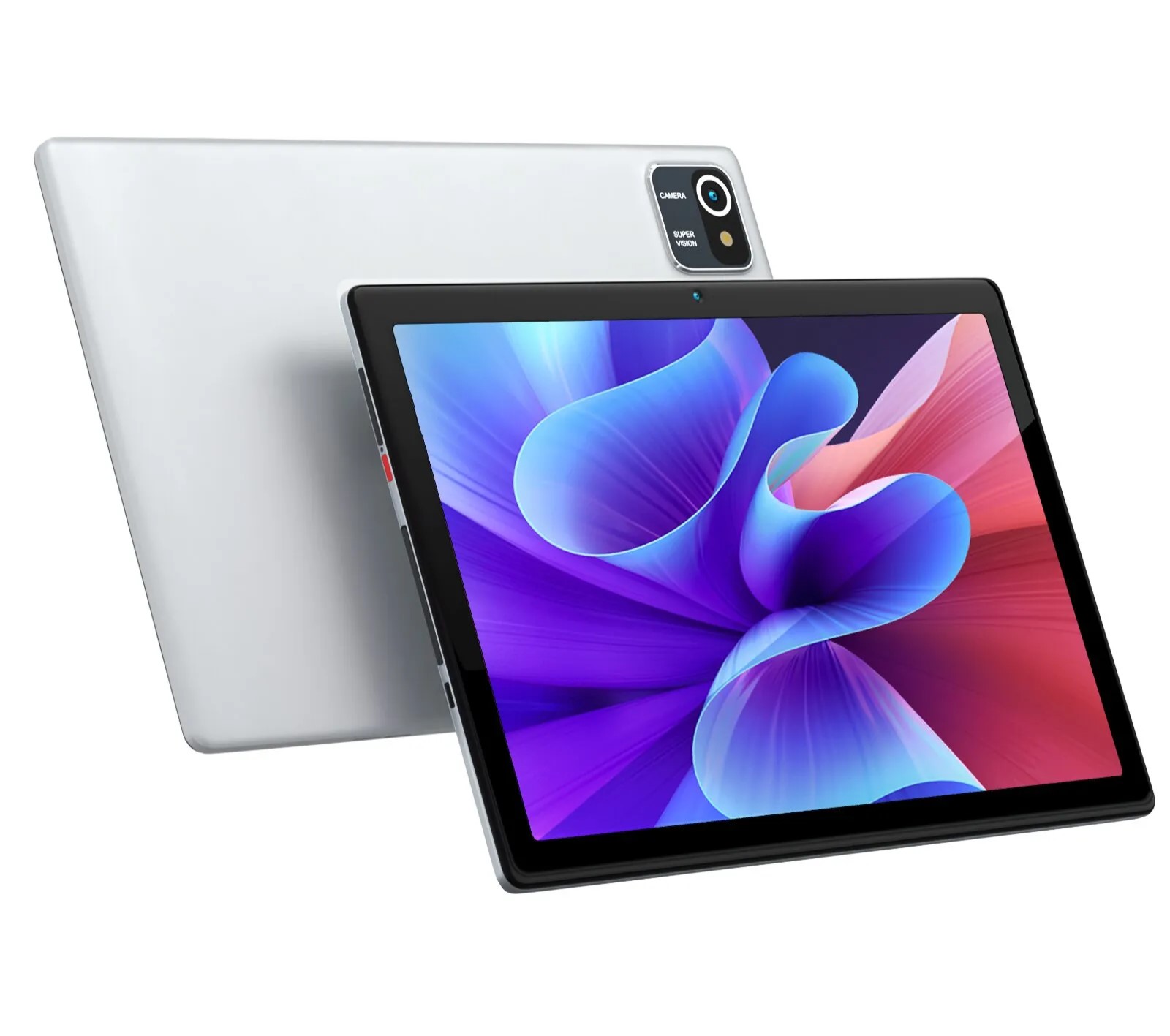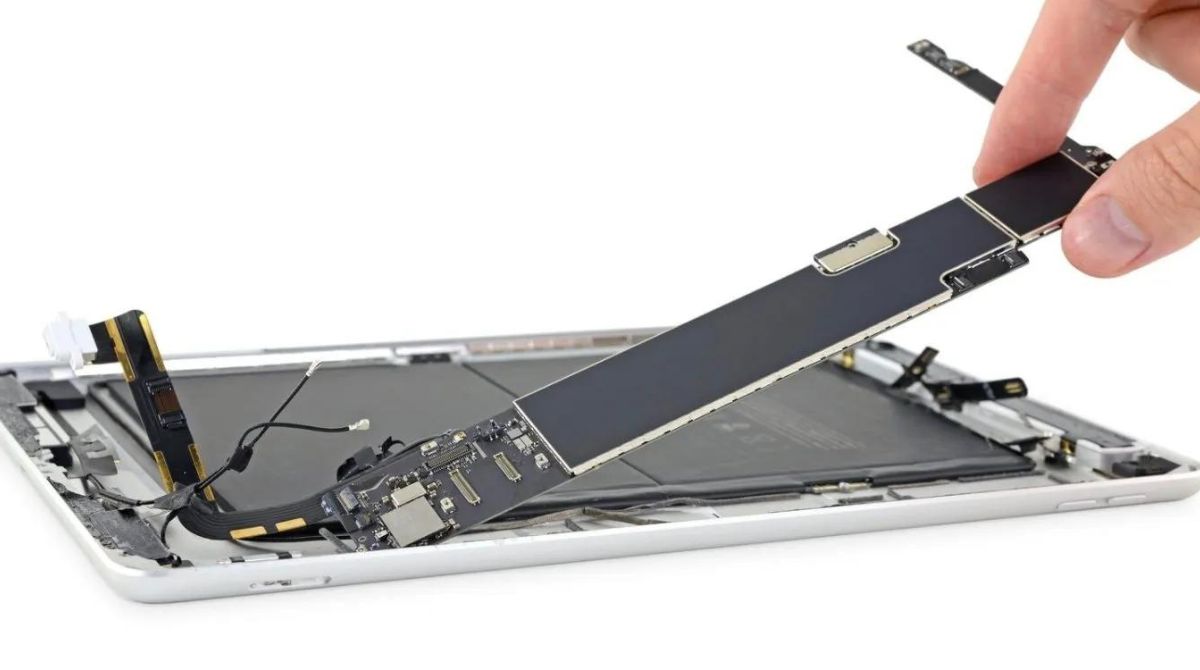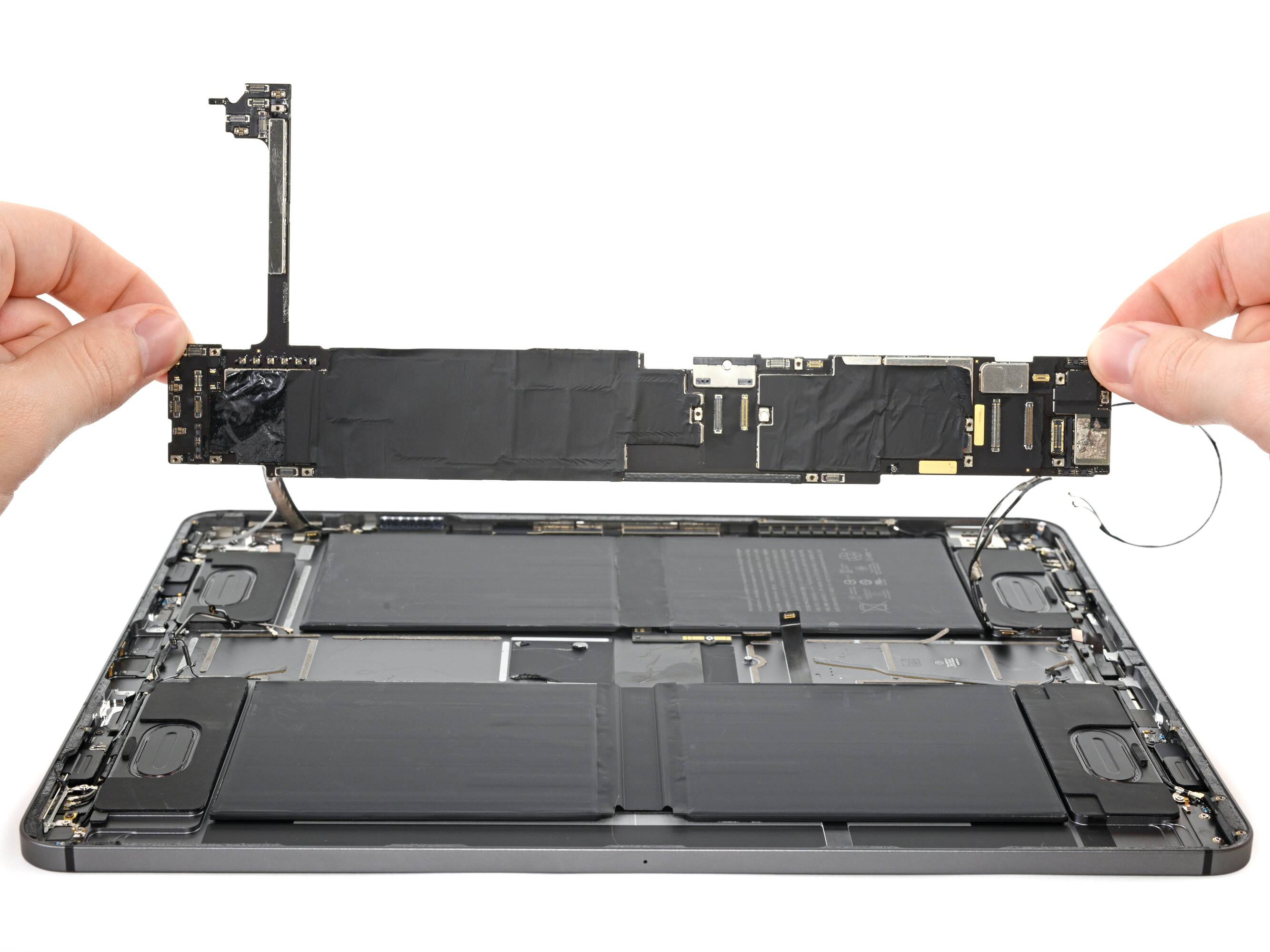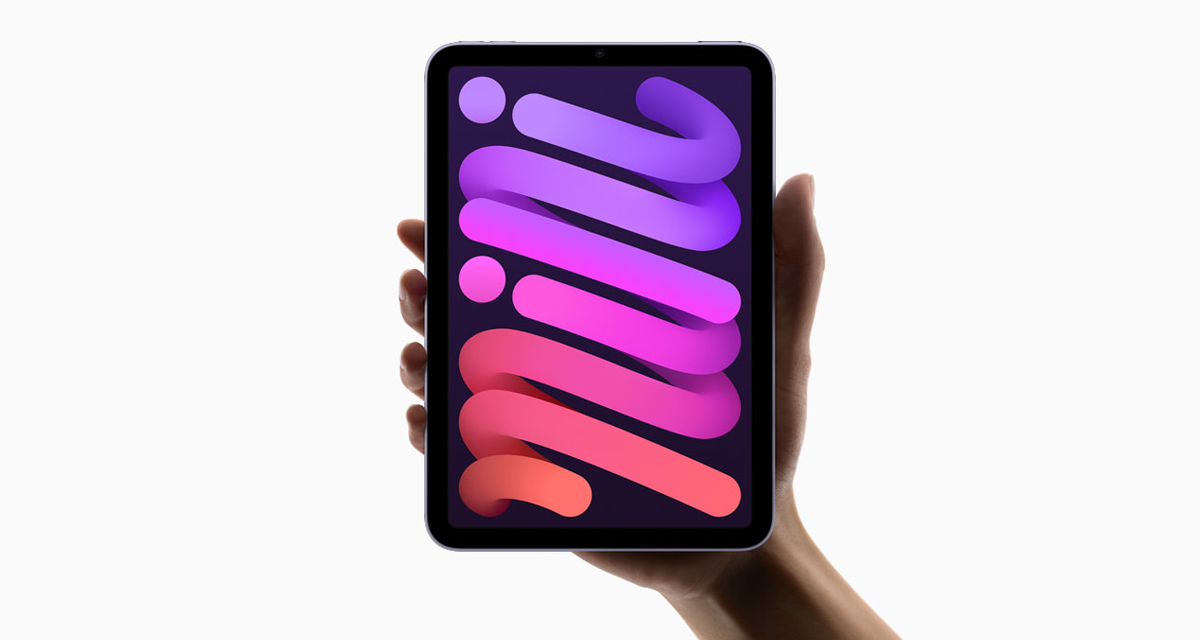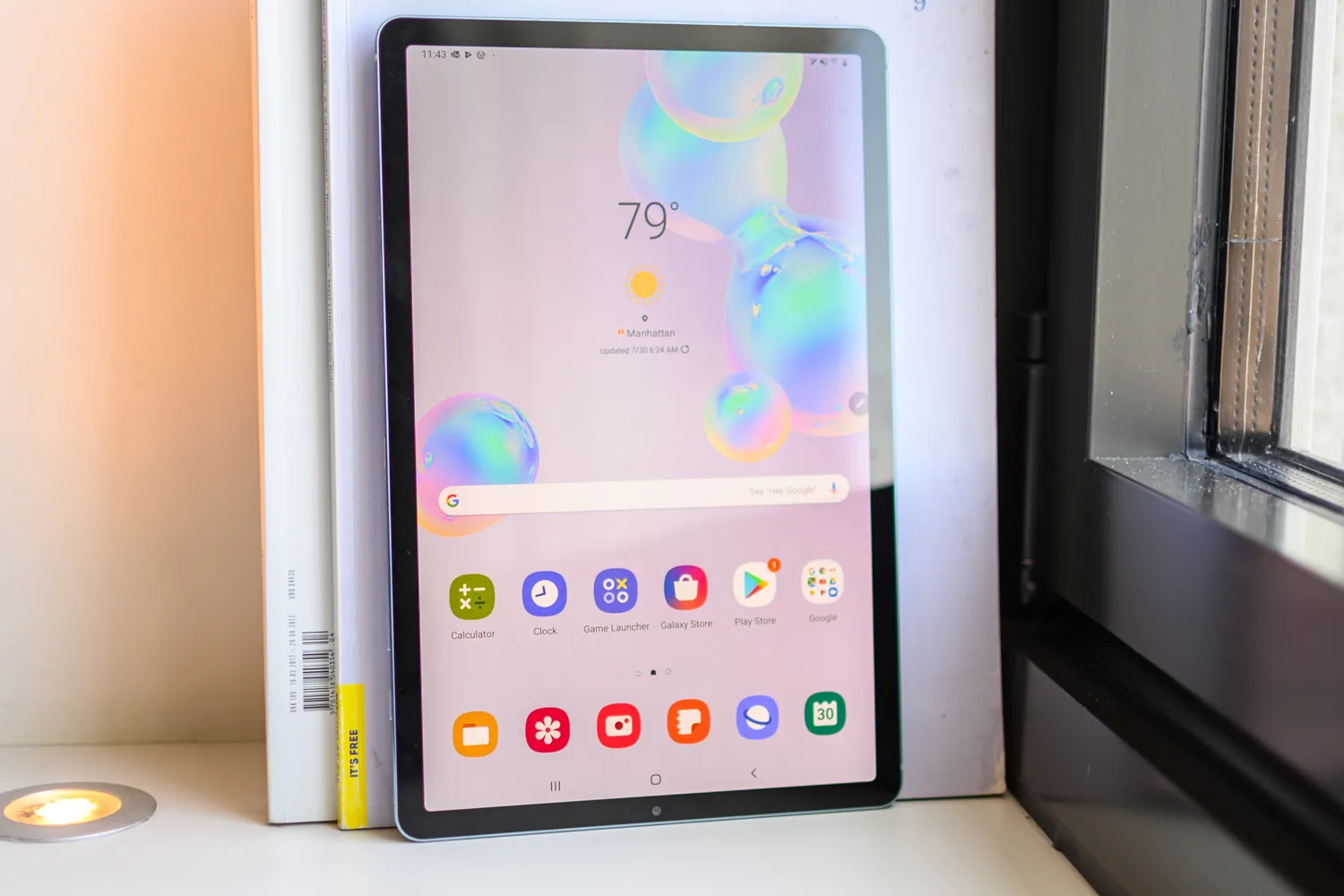Introduction
In today’s fast-paced digital world, tablets have become an essential tool for many people. Whether for work, entertainment, or communication, tablets offer convenience and portability. However, one crucial factor that often gets overlooked when choosing a tablet is its RAM capacity.
RAM, which stands for Random Access Memory, is a vital component in any computing device, including tablets. It plays a crucial role in determining the device’s performance and multitasking capabilities. Essentially, RAM acts as temporary storage for data that the tablet’s processor can quickly access when needed.
Choosing the right amount of RAM for your tablet is crucial to ensure smooth and efficient operation. In this article, we will delve into the factors to consider when deciding how much RAM a tablet needs and provide recommendations based on different usage scenarios and budgets.
Before we dive into the details, it’s important to note that RAM requirements can vary depending on individual needs and usage patterns. However, by understanding the basics and considering specific requirements, you can make an informed decision and choose a tablet that can meet your needs now and in the future.
Now, let’s explore the factors that come into play when determining the RAM capacity needed for a tablet.
What is RAM?
RAM, or Random Access Memory, is a crucial component in any computing device, including tablets. It is often referred to as the device’s short-term memory. Unlike the device’s storage, which stores data permanently, RAM provides temporary storage for data that the processor needs to access quickly.
When you use a tablet, the various applications and processes running on it require data to be stored and accessed quickly. The tablet’s processor retrieves and stores this data in RAM, allowing for smooth and efficient operation. Think of RAM as your tablet’s working space, where data is readily available for the processor to work on without constantly fetching it from the storage.
The amount of RAM a tablet has directly impacts its performance and multitasking capabilities. Tablets with larger RAM capacities can handle more data-intensive tasks, such as running multiple applications simultaneously, browsing the web with multiple tabs open, or editing videos without experiencing lag or slowdowns.
RAM capacity is measured in gigabytes (GB). The more RAM a tablet has, the more data it can handle at once. However, it’s important to note that simply having more RAM does not guarantee better performance if the tablet’s processor and other hardware components are not capable of utilizing it effectively.
It’s also worth mentioning that RAM is different from the device’s storage capacity, which determines how much data the tablet can permanently store. While storage is essential for holding files, documents, and apps, RAM is critical for the tablet’s day-to-day operation and multitasking capabilities.
In the next sections, we will explore the factors to consider when choosing the appropriate RAM capacity for your tablet, depending on your usage requirements. Whether you’re a casual user, a multitasker, a gamer, or someone who works with resource-intensive applications, understanding the relationship between RAM and performance will help guide you towards making the right choice.
Factors to Consider When Choosing RAM for a Tablet
When deciding how much RAM a tablet needs, there are several factors to consider. These factors will depend on your usage requirements and the type of tasks you typically perform on your tablet. Consider the following:
- Usage Patterns: Evaluate how you use your tablet. Are you a casual user who primarily uses it for web browsing, social media, and light productivity tasks? Or are you a power user who frequently engages in multitasking, gaming, or resource-intensive activities like video editing? Understanding your usage patterns will help you determine the amount of RAM needed.
- Operating System: Different operating systems have varying RAM requirements. For example, iOS requires less RAM compared to Android for similar performance. If you’re utilizing an Android tablet, it’s generally recommended to have more RAM due to the operating system’s resource demands.
- Future Proofing: Consider how long you plan to use your tablet. If you aim to use it for several years, it’s wise to opt for a tablet with a higher RAM capacity. This will ensure that it can handle future software updates, newer apps, and increased system requirements.
- Budget: RAM capacity can significantly impact the price of a tablet. Tablets with larger RAM capacities tend to be more expensive. Therefore, it’s important to strike a balance between your budget and the RAM requirements dictated by your intended usage.
- Software and App Requirements: If you rely on specific software or apps that require substantial memory, it’s essential to consider their RAM recommendations or requirements. Some resource-intensive applications, such as graphic design or video editing software, may need more RAM to run smoothly.
By considering these factors, you can make a more informed decision when choosing the appropriate RAM capacity for your tablet. In the next sections, we will explore different usage scenarios and outline the recommended RAM requirements for basic tasks, multitasking, gaming, and video editing.
Basic Tasks and RAM Requirements
If you primarily use your tablet for basic tasks such as web browsing, email, document editing, and media consumption, you don’t need an excessive amount of RAM. A tablet with a modest RAM capacity will suffice for these activities.
For casual users who engage in light multitasking, a tablet with 2GB to 4GB of RAM should be able to handle these tasks without any major performance issues. This range of RAM allows for smooth web browsing with multiple tabs open, switching between apps, and running basic productivity software.
It’s worth noting that the specific operating system of your tablet can also impact its RAM requirements. For instance, iOS devices typically require less RAM due to their optimized software, while Android devices may need a slightly higher RAM capacity for similar performance.
If you’re on a tight budget or primarily engage in basic tasks, opting for a tablet with 2GB to 4GB of RAM is a practical choice. It will provide a smooth user experience without unnecessary expenditure on excessive RAM capacity.
However, it’s essential to consider future-proofing your tablet. If you plan to use it for several years or anticipate installing newer versions of apps and software, opting for a tablet with a higher RAM capacity, such as 4GB to 6GB, may be more beneficial. This ensures that your tablet can handle future updates and increased software demands.
Overall, for basic tasks like web browsing, email, document editing, and media consumption, a tablet with 2GB to 4GB of RAM is generally sufficient. It strikes a balance between performance, cost, and future-proofing, providing a smooth and efficient user experience without unnecessary limitations.
Multitasking and RAM Requirements
If you frequently engage in multitasking on your tablet, such as running multiple applications simultaneously or switching between resource-intensive tasks, you’ll need a tablet with a higher RAM capacity to ensure smooth operation.
When multitasking, each application requires a portion of the tablet’s RAM to store and process data. The more applications you have open and active at the same time, the more RAM is required. Insufficient RAM can lead to sluggish performance, app crashes, and delays in task switching.
For moderate multitasking, a tablet with 4GB to 6GB of RAM should be able to handle the workload effectively. This range allows you to run multiple apps simultaneously, browse the web with several tabs open, and smoothly switch between tasks.
For power users and those who engage in extensive multitasking or use resource-intensive applications, opting for a tablet with 6GB to 8GB of RAM or more is recommended. This higher RAM capacity enables efficient multitasking, even with demanding apps like video editing software or graphic-intensive gaming.
Additionally, if you frequently use productivity-oriented features like split-screen mode to work on multiple tasks simultaneously, a higher RAM capacity will provide a seamless and responsive experience.
It’s important to note that while RAM is crucial for multitasking, it’s not the only factor that determines overall performance. The tablet’s processor, storage speed, and software optimizations also play significant roles. However, having sufficient RAM is essential to ensure that applications can run smoothly and switch between tasks seamlessly.
In summary, if you frequently engage in multitasking or use resource-intensive applications, opting for a tablet with 4GB to 6GB of RAM provides a good balance between performance and cost. For power users or those with extensive multitasking needs, going for a tablet with 6GB to 8GB of RAM or more will deliver a smoother and more responsive multitasking experience.
Gaming and RAM Requirements
Gaming on a tablet has become increasingly popular, thanks to the availability of high-quality games and powerful hardware. When it comes to gaming, the RAM capacity of your tablet plays a vital role in providing a smooth and immersive gaming experience.
Modern mobile games, especially graphics-intensive ones, require a significant amount of RAM to load and run smoothly. In addition, having sufficient RAM allows for seamless multitasking while gaming, such as having chat apps or streaming services running in the background.
For casual gamers who enjoy lightweight games or less demanding titles, a tablet with 4GB of RAM will generally suffice. This capacity should enable a smooth gaming experience for most casual mobile games, including puzzle games, casual simulations, and basic action games.
However, for more demanding games, especially those with high-quality graphics or open-world environments, it’s advisable to opt for a tablet with a higher RAM capacity. Tablets with 6GB to 8GB of RAM or more will handle graphic-intensive games smoothly, reducing load times and preventing lag or stuttering during gameplay.
Moreover, if you plan to play multiplayer games or stream gameplay while gaming, having extra RAM becomes even more essential. It allows for seamless multitasking, ensuring that your gaming experience remains uninterrupted.
It’s important to note that while RAM is crucial for gaming, other factors like the tablet’s graphics processing unit (GPU), display resolution, and processing power also impact gaming performance. However, having adequate RAM enables the tablet to store and access game data efficiently, improving overall gameplay performance.
To summarize, for casual gamers, a tablet with 4GB of RAM provides a satisfactory gaming experience for most mobile games. If you enjoy more demanding games with high-quality graphics or engage in multitasking while gaming, opting for a tablet with 6GB to 8GB of RAM or more is recommended to ensure a smooth and immersive gaming experience.
Video Editing and RAM Requirements
Video editing is a resource-intensive task that demands a powerful device with ample RAM to handle the processing and manipulation of large media files. When it comes to video editing on a tablet, having sufficient RAM is crucial for a smooth and efficient workflow.
Video editing software requires a significant amount of RAM to store and process large video files, apply effects, transitions, and render the final output. Insufficient RAM can lead to sluggish performance, frequent crashes, or even the inability to handle complex edits.
For basic video editing tasks, such as trimming clips, applying basic effects, and exporting in standard-definition formats, a tablet with 6GB to 8GB of RAM is typically sufficient. This capacity allows for smooth editing and rendering of videos without major performance limitations.
However, if you’re working with high-resolution footage, multiple video tracks, complex effects, or advanced editing techniques, opting for a tablet with 8GB of RAM or more is recommended. This higher RAM capacity provides the necessary headroom for smooth playback, real-time previewing, and efficient rendering of your editing projects.
It’s also worth considering the storage capacity of the tablet, as video files can occupy a significant amount of space. Having ample storage ensures that you have sufficient space to store raw footage, project files, and the export output.
Furthermore, integrating a tablet with a stylus or pen support can enhance your video editing experience. It allows for precise control and ease of use when making adjustments, applying effects, and navigating the editing software.
Keep in mind that video editing software requirements may vary, so it’s essential to check the specific recommendations of the software you plan to use. Some professional-grade video editing software may have higher RAM requirements to ensure optimal performance.
In summary, for basic video editing tasks, a tablet with 6GB to 8GB of RAM is generally adequate. For more advanced editing projects, including high-resolution footage, complex effects, and multi-track editing, opting for a tablet with 8GB of RAM or more will provide a smoother and more efficient video editing experience.
Future-proofing Your Tablet with RAM
When considering the RAM capacity for your tablet, it’s important to think about future-proofing. Future-proofing means selecting a tablet that can meet your needs not just in the present, but also as software and technology continue to evolve.
Technology advances at a rapid pace, and as new software updates, applications, and features are introduced, they often come with increased system requirements. Having a tablet with ample RAM is essential to ensure that it can handle future updates and the growing demands of software and apps.
Opting for a tablet with a higher RAM capacity ensures that it can handle newer versions of operating systems, software updates, and emerging apps without experiencing significant performance limitations. This future-proofing approach allows you to extend the usable lifespan of your tablet and minimize the need for an upgrade in the near future.
Consider your usage patterns and the intended lifespan of the tablet. If you plan to use it for several years or want to future-proof your device, it’s advisable to choose a tablet with a higher RAM capacity. This will provide the necessary headroom for future software advancements and ensure a smooth user experience throughout its lifespan.
Additionally, if you’re a power user or engage in resource-intensive tasks like multitasking, gaming, or video editing, investing in a tablet with more RAM can significantly enhance your experience. It allows for more efficient multitasking, smoother gaming performance, and seamless video editing without running into performance bottlenecks.
While increasing the RAM capacity may come with a higher price tag, it can be a worthwhile investment if you plan to use the tablet for several years or anticipate using more demanding software in the future.
By future-proofing your tablet with a higher RAM capacity, you ensure that it remains capable of handling future software advancements, emerging technologies, and increasing demands. This enables you to stay productive, enjoy the latest features, and avoid the need for a premature upgrade.
RAM Recommendations for Different Budgets
When it comes to choosing the right RAM capacity for your tablet, it’s essential to consider your budget. RAM capacity can significantly impact the price of a tablet, so finding a balance between your budget and the required RAM for your usage needs is crucial.
Here are some RAM recommendations for different budgets:
- Budget-Friendly Range (Under $200): If you have a limited budget and primarily use your tablet for basic tasks like web browsing, email, and lightweight apps, a tablet with 2GB to 4GB of RAM will suffice. Consider entry-level or budget tablets that offer decent performance in this RAM range within your budget constraints.
- Mid-Range Budget ($200 – $500): If you can spend a bit more, you can find tablets with higher RAM capacities between 4GB and 6GB. These tablets are suitable for moderate multitasking, light gaming, and casual video editing. Look for well-rounded mid-range tablets that offer a good balance between price and performance.
- Higher-End Budget ($500 and above): For those with a more generous budget and demanding usage needs, tablets with 6GB or more of RAM are recommended. These tablets can handle heavy multitasking, graphic-intensive gaming, and professional-grade video editing. Look for premium tablets with flagship specifications that offer higher RAM capacities.
Remember that RAM is not the only factor to consider when purchasing a tablet, and other hardware components and software optimizations also play a role in overall performance. Therefore, it’s important to research and compare different tablets within your budget range to find the best overall package that meets your RAM requirements and usage needs.
Keep in mind that prices and specifications can vary, so it’s important to review different options and read reviews from reputable sources before making a decision. Understanding your budget and the specific RAM requirements for your usage patterns will help you find a tablet that offers the best value for your money.
Ultimately, finding the right balance between your budget and the required RAM capacity ensures that you get a tablet that meets your needs without overspending or compromising on performance.
Conclusion
Choosing the right amount of RAM for your tablet is crucial for ensuring optimal performance and a smooth user experience. By considering factors such as usage patterns, operating system requirements, future-proofing, budget, and specific task requirements, you can make an informed decision regarding the RAM capacity that suits your needs.
For basic tasks like web browsing, email, and light productivity, a tablet with 2GB to 4GB of RAM will generally suffice. If you engage in multitasking, gaming, or video editing, opting for a tablet with 4GB to 6GB of RAM is recommended for a more efficient experience.
Power users or those with extensive multitasking, demanding gaming, or professional video editing requirements should invest in a tablet with 6GB of RAM or more for optimal performance.
Future-proofing your tablet with a higher RAM capacity is advisable if you plan to use it for several years or want it to handle future software updates and emerging technologies.
Keep in mind that RAM is just one aspect of a tablet’s overall performance. Other factors such as the processor, graphics capabilities, display quality, and software optimizations all play a role in determining device performance.
Lastly, consider your budget when selecting a tablet with the appropriate RAM capacity. There are options available in different price ranges, so finding a tablet that strikes a balance between cost and performance is possible.
By taking these factors into account and conducting thorough research, you can find a tablet with the right amount of RAM that meets your usage requirements, provides a smooth user experience, and offers good value for your investment.







